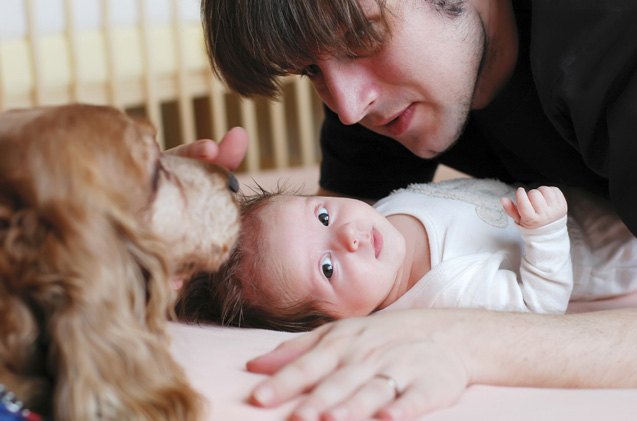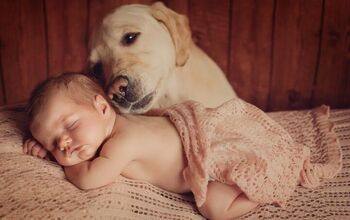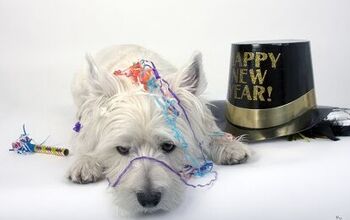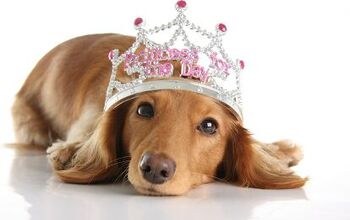How To Introduce Your Dog To A New Baby

Who is the new, hairless puppy? Why does it smell so strange? What is that weird noise it’s making? And why does it need so much attention? These are some of the questions your dog would ask if he could talk when you brought a new baby into your home.
This is an exciting time for everyone in the family – the dog included – and you want to make sure that pooch and baby start off on the right paw. As parents, you have nine months to get ready for this introduction. Make the most of this time to prepare your pup for the addition with these tips on how to introduce your dog to new baby.
Come in First Without the Baby: You haven’t seen your dog in a few days, and it’s no surprise that he’s excited to see you. It’s a good idea to say hello first without the baby to get some of that pent up energy and excitement out of the way. A good pet and belly rub can help calm him down a bit before the baby makes an appearance.
Keep Calm and Make the Introductions: It’s important to stay calm when you walk into the house with the baby. Someone needs to have control of the dog on a leash and they should be waiting for you in another room that doesn’t have direct access to the front door. You’ll be nervous – you want this introduction to go well, and your dog will pick up on your feelings. Speak in even, cheerful tones when you greet your dog. The person holding the leash can distract your dog with treats as you settle in, sit down and get comfortable. Your dog should not jump up or try to sniff your new buddle of joy. He should be sitting on the other side of the room, on a leash, politely. When he responds calmly and politely, you can then reward him with praise and treats. Babies should be seen as good things, likes treats and praise.
Meet and Greet: The first actually meet and greet may take place then or at later on – it’s up to you, whenever it feels comfortable with you with. Whenever it takes place, all of the details have to be worked out and you need to have people there to help you out. It should take place in a quiet room, with you sitting down and the baby nestled securely in your arms. Another person should come into the room with the dog on a leash, calmly. Direct your dog in a calm voice, be firm but not angry, even if he does something wrong. As your dog approaches you and the baby, the leash should be loose but short. Keep your voice calm and gentle as he sniffs the baby and treat him to rewards as he does it gently. Keep the sessions shorts so the dog doesn’t get too excited and so that you remain in control at all times.
Establish Boundaries: The boundaries I’m talking about are around the nursery. This room should be off limits to your dog. You can put up a baby gate that swings open or teach your dog to understand that there is an invisible barrier. Either way, your dog is not allowed in unless you give your permission. In time, you can let you dog in the room while you are there to sniff around, but make sure these visits are timed. You can even start this practice before the baby comes.
Don’t Exclude Your Dog: Is your dog being a brat? It might be because he’s not getting enough attention. You have to remember, he used to be the baby of the house – now he’s got a new baby brother or sister to share it with. You need to include him has much as possible when you’re around the baby and make him feel like he’s part of the family. Daily walks with the baby stroller are an easy way to get out of the house for the both of you to get some much needed exercise.
Train Your Baby: Once your baby starts to explore his surroundings, it’s important to teach him how to interact with the dog. You need to supervise every aspect to ensure respect, as you want to make he doesn’t play rough with the dog – such as yank his tail, pull his fur, hit or kick the dog, or even use him as a teething toy! You need to start teaching your child as soon as possible, even if you have the most patient dog in the world.
Extra Help: If you think you need extra help, do not hesitate to bring in the big guns. Hire a professional dog trainer to help make this transition smooth for everyone involved. You need to be sure that you baby is safe, but if not, be prepared to face the fact that you may have to find your dog a new home so that baby and dog are both safe and happy in their surroundings.
This is a busy time for you, but try to keep to a routine as much as possible. It will help keep your dog adjust to the addition and will ensure you spend some quality time with him. In time, you’ll become a big, happy family and you won’t be able to imagine your life otherwise

Amy Tokic, Editor of PetGuide.com, is a passionate animal lover and proud pet parent of Oscar, a Shih Tzu/Chihuahua cross, and Zed, a Japanese Chin. Her love of animals began in kindergarten, when she brought her stuffed dog Snoopy into class with her every day. Now, she writes about her adventures in pet ownership and tirelessly researches products, news and health related issues she can share with other animal enthusiasts. In her free time, Amy loves perusing used book and record stores, obsessing over the latest pet products available and chasing squirrels with wild abandon (a habit attributed to spending too much time with her pooches).
More by Amy Tokic























